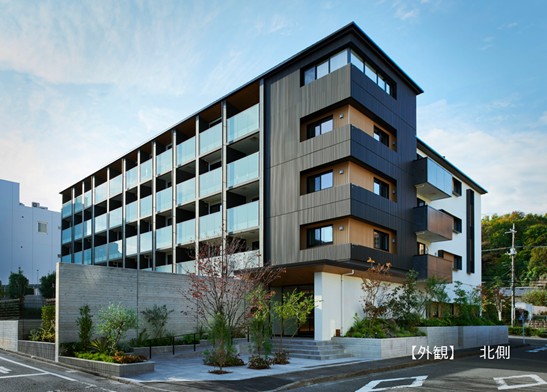Wooden office buildings and condominiums are also wooden cities are "second forests"
Updated by Kazuaki Hiraishi on May 14, 2025, 10:01 AM JST
Kazuaki HIRAISHI
(Platinum Initiative Network, Inc.
After graduating from the University of Tokyo in 1984 with a bachelor's degree in Civil Engineering, he joined Mitsubishi Research Institute, Inc. He served as Director of the Overseas Business Center, Director of the Policy and Economic Research Center, Deputy Director of the Policy and Public Affairs Division, Secretary General of the Asian Pipeline Study Group, Secretary General of the Northeast Asian Gas and Pipeline Forum, and Executive Vice President of MRI Research Associates, Inc. He has served as President of M.R.I. Research Associates, Inc. He specializes in infrastructure planning, transportation economics, and energy economics. D. in Engineering, Bachelor of Engineering (Construction).
With regard to new demand for woody biomass, it should be noted that the development of wooden cities has led to an increase in building materials. Wooden cities are defined as "the conversion of towns to wood and woody materials. In particular, as the conversion of non-residential buildings to wood and woody materials progresses, we can expect to see significant demand for woody materials. The Platinum Network's vision is to convert all new buildings of nine stories or less to wood construction by 2050. Trees grow by absorbing CO2 from the atmosphere, and when cut trees are used as building materials for construction, the carbon remaining in the wood from the absorbed CO2 will be fixed as part of the building. Forests are the "primary forest" that fixes carbon, but wood construction and conversion of towns to wood can contribute to decarbonization by creating a "secondary forest" in cities.
Wooden buildings not only fix CO2, but are also more friendly to people and health than reinforced concrete or steel buildings. Wood has a smaller thermal capacity and thermal diffusivity than steel or concrete. Wood is a "natural humidity regulator" that absorbs moisture when humidity is high and conversely releases moisture when humidity is low to maintain a constant humidity level. The fragrance emitted by trees is a bactericidal substance called phytoncide, which inhibits invisible mites, mold, and bacteria. It is said that a space surrounded by wood is calming, and it has also been verified that wooden buildings are effective in improving mental and physical health and business productivity.
The background to the increased attention paid to wooden cities can be attributed to "technological advances" and "policy support. The former is the strengthening of earthquake resistance and durability through the use of metal joint construction methods and cross laminated timber (CLT), and the strengthening of fire resistance through the development of fire-resistant wooden members. In the latter case, the promotion of wooden buildings has been positioned in the Global Warming Prevention Plan and the Basic Plan for Housing and Living Standards, and the Building Standards Law has also been revised to encourage wooden buildings. In particular, the "Law Concerning the Promotion of the Use of Wood in Buildings, etc. to Contribute to the Realization of a Decarbonized Society," which was revised in the 2021 ordinary Diet session, declares that the use of wood in buildings in general, including private buildings as well as conventional public buildings, is to be promoted, and measures are being taken to promote the spread of advanced technologies, human resource development, and the provision of safety-related The Act promotes the use of wood in buildings in general, including private-sector buildings, in addition to conventional public-sector buildings.

Encouraged by this background, wooden cities are beginning to take off. There are several advanced examples of wood construction in non-residential buildings. For example, Mitsui Home Co., Ltd. has launched "MOCXION INAGI," a sustainable wooden condominium that uses wood as its main structural material and offers high thermal insulation, strength, and durability. The rent is 1.4 times higher than that of condominiums in the Inagi Station area, but the units filled up quickly, indicating the high potential for investment in mid- to high-rise wooden buildings.
The emergence of a "wooden city" in the true sense of the word, where not only single wooden buildings are constructed, but also multiple wooden buildings are developed in an areal manner to form city blocks, will accelerate the movement to make the city wooden and wood-based. Our next theme is the realization of a wooden city that develops in an areal fashion. We are working with private companies related to wooden cities, regional banks and other financial institutions, and local governments to formulate concrete projects. (Kazuaki Hiraishi, Executive Director, Platinum Network)
The book of the same title as this web media, "Forest Circular Economy" (edited by Hiroshi Komiyama) was published by Heibonsha on August 5, 2025. The book proposes a redesign of the economy, institutions, and local communities based on the three pillars of biomass chemistry, wooden cities, and forestry innovation in the cycle of "cutting, using, planting, and nurturing" forests. This practical book provides a point of contact between concepts and examples for those involved in policy making, social implementation, and the creation of businesses that make use of local resources.
View on Amazon